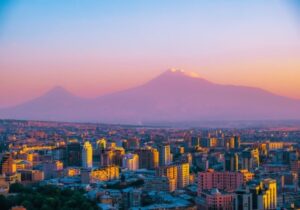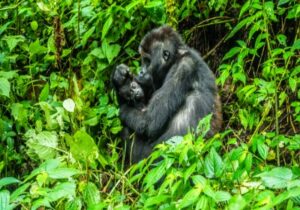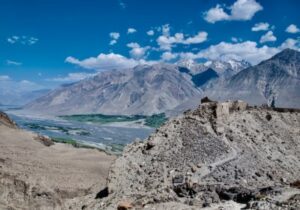As much of the world is still recovering from the global pandemic, some economies are getting back on track faster than others. Some have even seen record growth and are going to finish the year on a strong economic note.
The article below gives a brief overview of the world’s ten fastest-growing economies in 2023, based on GDP growth only, including reasons for their rapid and continuous growth and potential future plans for trade and services.
The Economic Growth Concept – An Overview
Economic growth refers to an increase in a country’s production of goods and services over time. It is typically measured by the rise in a nation’s Gross Domestic Product (GDP). This expansion is often associated with improvements in living standards, job creation, and increased income levels.
Economic growth is influenced by various factors, such as technological advancements, investment, consumer spending, and government policies, which play a crucial role in determining a country’s overall prosperity and development.
GDP-growth and other key economic growth indicators
Real GDP Growth Rate
The Gross National Product (GNP)
Per
capita
The Human Development Index (HDI)
Income distribution
GDP is one of the main indicators of economic growth, but there are other factors that show a country’s economy is growing. For example, on GDP alone, the United States is the richest country in the world, but if other factors are taken into account, it is overtaken by many other countries that are more wealthy:
- Real GDP Growth Rate: This refers to a country’s GDP over a certain period after adjusting for inflation. It is a key indicator of economic performance and reflects the actual expansion of an economy’s output. By factoring in the inflation rate, the real GDP growth rate provides a more accurate representation of an economy’s actual growth, enabling comparisons of economic performance over time.
- The Gross National Product (GNP): Accounts for the total value of goods and services produced by a country’s residents, both domestically and internationally.
- Per capita: This refers to the average per person or per individual. It is commonly used in economic and statistical analysis to determine values, income, or other indicators on a per-person basis, allowing for comparisons and assessments that consider the population size.
- The Human Development Index (HDI): This is a composite statistic that measures a country’s average achievements in three basic aspects of human development: Health (life expectancy at birth), education (mean years of schooling and expected years of schooling), and standard of living (GNI per capita).
- Income distribution: Reflects the evenness or unevenness of income distribution among the population, indicating social welfare and economic stability.

Oil production and oil prices impact the economies of both producing and consuming nations, affecting trade balances and investment patterns. Population growth, if managed effectively, can drive workforce expansion and domestic demand. Emerging market economies’ real GDP growth rates often indicate global economic trends and investment opportunities.
Investments in human capital, essential for innovation and productivity, can foster long-term economic growth. In addition, a country’s GDP and the vast majority of its economic activity can be affected by natural disasters, potentially causing long-term setbacks. Inflation rates must be carefully managed to ensure price stability and consumer confidence.
What’s more, returning to pre-pandemic levels remains a priority for many nations striving for sustained economic recovery. Over the last few years, climate change has posed a significant threat to economic stability, necessitating the integration of sustainable practices to mitigate environmental risks and ensure long-term growth.
Which organization reliably lists the fastest-growing economies?
Several reputable organizations routinely list the fastest-growing economies worldwide. These include the International Monetary Fund (IMF), the World Bank, and the World Economic Forum (WEF). Additionally, financial institutions such as Bloomberg and the Economist Intelligence Unit (EIU) provide comprehensive reports on global economic growth.
Furthermore, specialized agencies like the United Nations Conference on Trade and Development (UNCTAD) and regional development banks such as the Asian Development Bank (ADB) also offer insights into the fastest-growing economies within specific regions.
It’s important to note that each of the above organizations will have its own framework in which it analyzes data, so they may come up with different reports on the fastest-growing economies. It’s therefore useful to understand their backgrounds and contributing factors for research as well as any organizations that may benefit from their research.
The World's Fastest Growing Economies
For the purpose of this article, we have consulted research from the IMF, to get an overview of the ten fastest-growing economies in 2024. The data below focuses on GDP growth only; taking into account other factors would change this list.
1. Macao SAR

Economically, Macao has reinvented itself in the past years and will see real GDP growth of 74.4 percent by the end of 2023. This has partly included government support for small and medium businesses, which is a major investment back into the local community. In addition to this, the country is branching out into other industries, such as health and wellness, innovative technology, as well as conventions and exhibitions.
2. Guyana

The country’s real GDP growth by the end of 2023 has been forecasted to be 38.4 percent by the IMF, and this is mainly due to an enormous oil discovery offshore.
3. Libya

However, Libya comes in third place for economic growth, with 12.5 percent by the end of 2023. This has also mainly been due to the oil and gas trade, although the country is looking to diversify away from those raw materials.
4. Maldives

The Maldives growth rate in 2023 is 8.1 percent, fostered by the continuous and rising tourist and holiday sector, which has been strong in the country for many years.
5. Samoa

Samoa’s GDP growth rate is predicted to be eight percent, thanks to lifting COVID-19 restrictions and increased public investment.
6. Fiji

Fiji’s growth rate for 2023 is set to be 7.5 percent, driven by its booming tourist sector, which is succeeding numbers from before the pandemic.
7. Armenia

Armenia’s economy has been boosted by migrants and businesses, especially since the Russian invasion of Ukraine. Its GDP is set to grow by seven percent in 2023.
8. Mozambique

The country’s economic growth of seven percent is attributed to the production of LDG (liquified natural gas), including services surrounding the industry.
9. Democratic Republic of the Congo

Although it’s forecasted to slow down after peaking last year, the mining sector is the biggest contributor to the Congo’s 6.7 percent growth this year.
10. Tajikistan

Tajikistan’s rapid growth has slowed since 2022 but is expected to reach 6.5 percent at the end of the year, mainly due to remittance flows, expanded services, and industrial production.
Which fast-growing economy should you live or invest in?

Antigua and Barbuda: This country offers a promising investment opportunity through the Antigua and Barbuda citizenship by Investment program due to its thriving tourism industry, stable political environment, attractive tax incentives, and vibrant real estate market, all set against the backdrop of its stunning natural beauty.
Canada: Expat life in Canada offers diverse benefits, including a stable economy, a strong rule of law, a skilled workforce, and access to global markets. This makes it a great place for expats who are looking to invest in a stable country. Additionally, the country promotes innovation, upholds high living standards, and fosters a welcoming multicultural environment.
Greece: Greece is a great country to invest in, given its strategic location, robust tourism sector, and attractive real estate opportunities through its Greece Golden Visa program. The country’s rich cultural heritage, favorable investment incentives, and ongoing economic reforms further enhance its investment appeal.
Malta: Investment in Malta’s citizenship by naturalization program offers compelling advantages through its strategic Mediterranean location, robust financial services sector, attractive tax incentives, and a diverse and resilient economy. The country’s stable political environment and pro-business with crypto-friendly policies further contribute to its investment appeal.
Fastest-Growing Economies: Key Takeaways
The fastest-growing economies give an important overview of which industries are most profitable and can also predict trends for other emerging economies. As some of the countries mentioned above heavily rely on natural resources and raw materials, this trend may change quickly, and the need to diversify is an ever-important topic for those economies.
Frequently Asked Questions about the Fastest Growing Economies in the World
What is the fastest-growing economy in the world in 2023?
According to the IMF and under the criteria of GDP growth, Macao SAR the the world’s fastest-growing economy in 2023. It has a predicted growth of 74.4 percent by the end of the year.
Which country will be richest in 2030?
According to HSBC research, China will have overtaken the US as the richest country in 2030. India is predicted to be in third place, Japan in fourth, and Germany in fifth.
Which country is financially the strongest?
The United States has maintained its position as the leading global economy and the wealthiest nation, consistently retaining its top spot from 1960 to 2023. Its economy showcases impressive diversity, driven by key sectors such as services, manufacturing, finance, and technology, contributing to its continued economic strength.
What is the fastest-growing economy in Asia?
China is expected to be the fastest-growing economy per capita in Asia, closely followed by India. However, its growth rate is smaller than it has been in the past.



